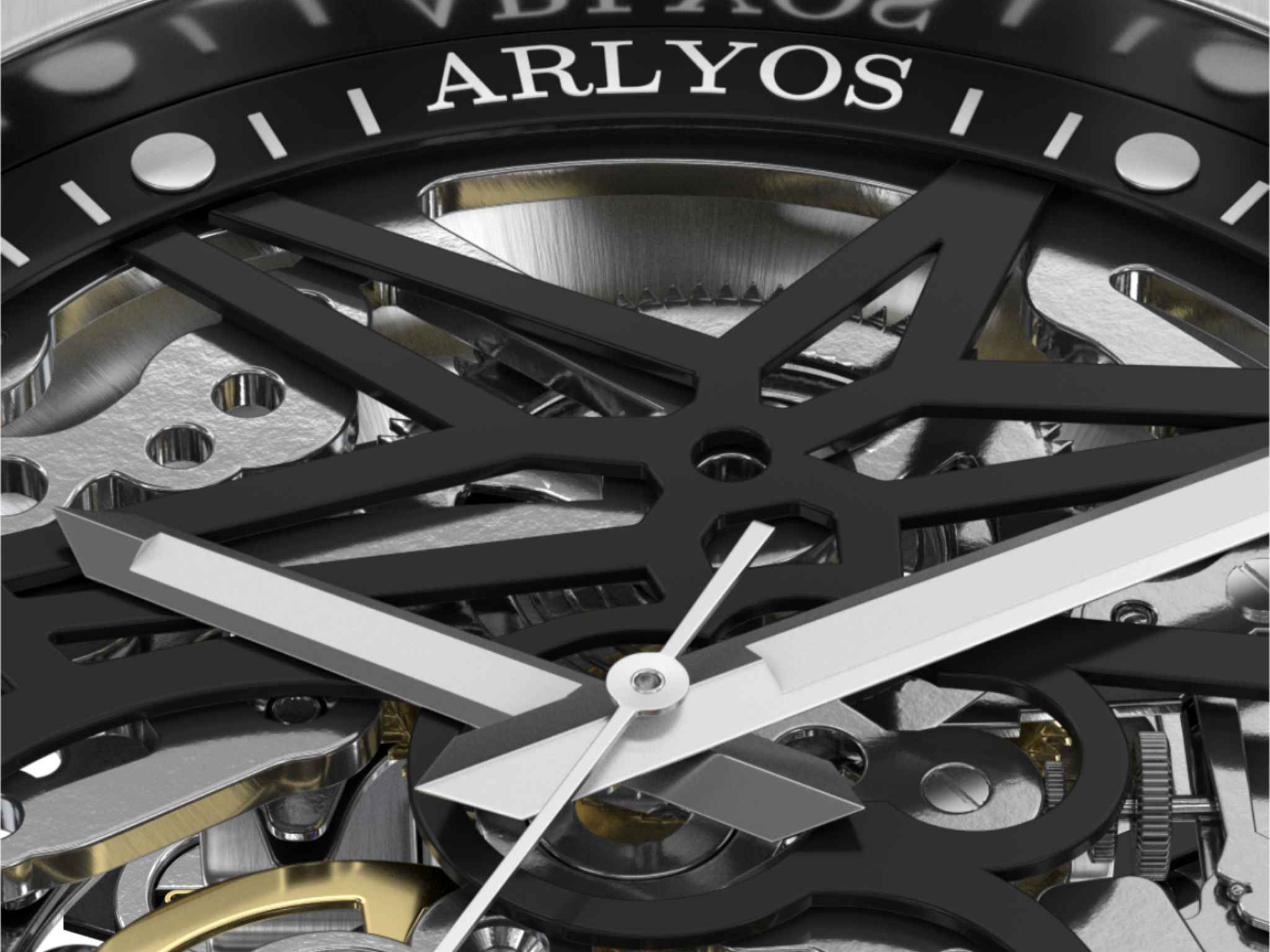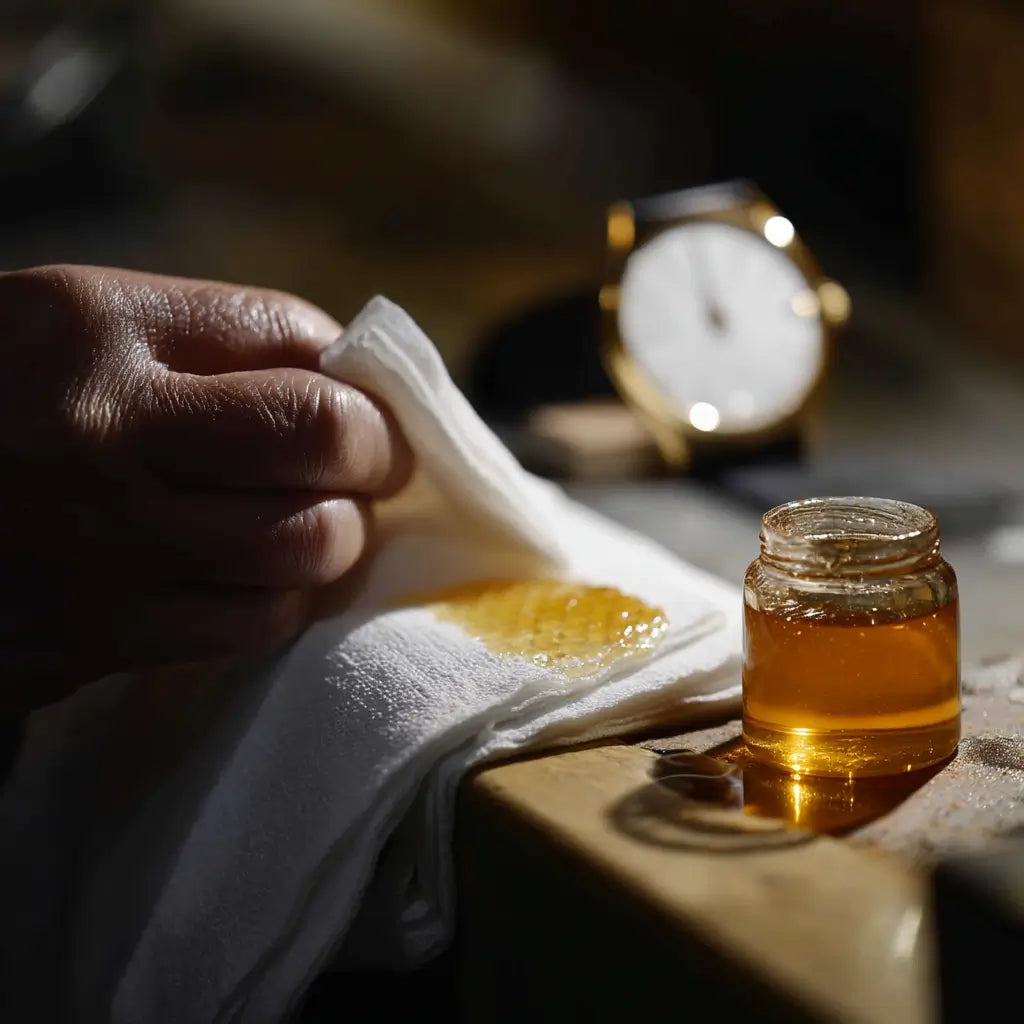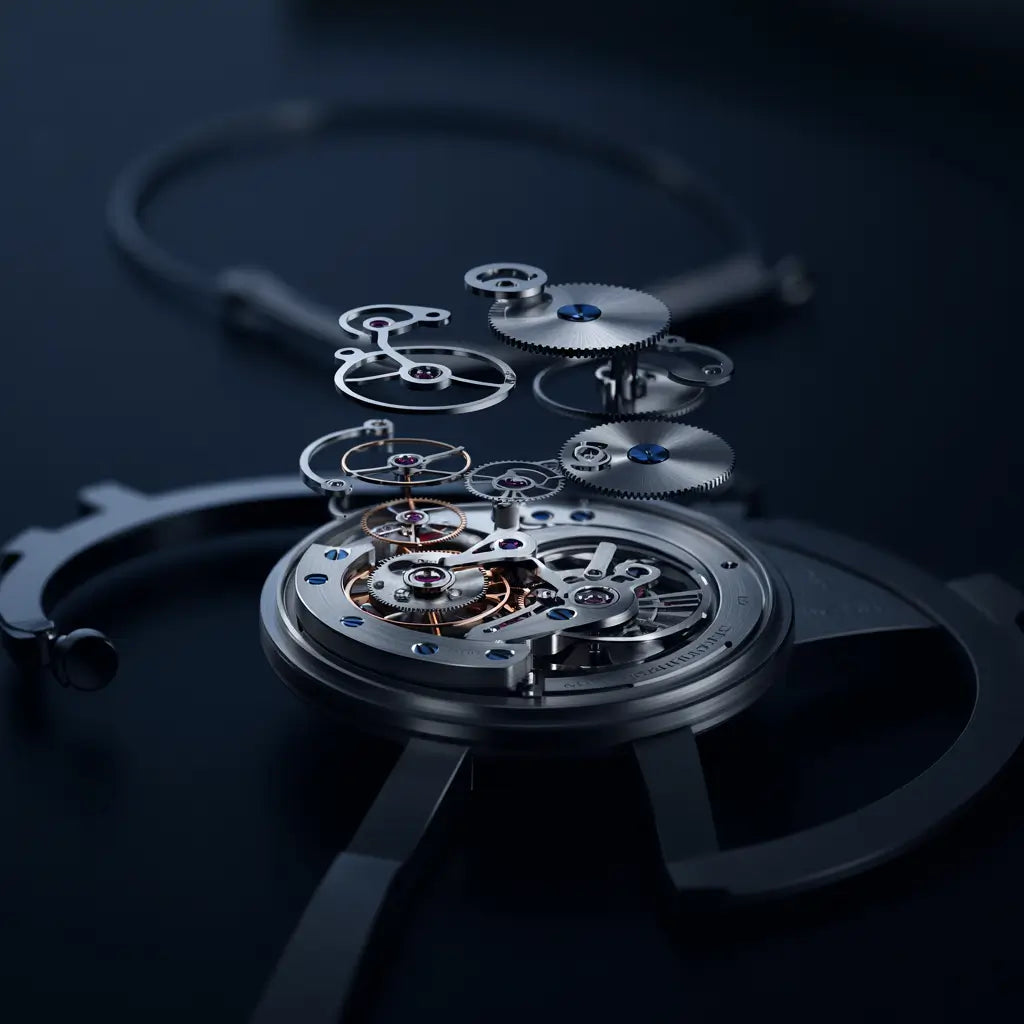The fascinating world of horology has its own language, which can often be intimidating for newcomers. Between complications, calibers, and finishes, technical vocabulary can quickly become an obstacle for anyone wishing to deepen their passion or simply understand the value of a fine timepiece. This comprehensive lexicon aims to demystify horological jargon and make the subtleties of this centuries-old art accessible to all.
Whether you're a curious enthusiast, a budding collector, or simply looking for precise information, you'll find in this guide all the essential definitions, organized by category to facilitate your exploration of the world of watchmaking.
Movements
Movement - The internal mechanism of the watch, comparable to its "engine." It comprises all the parts that allow the watch to function and indicate time.
Mechanical movement - A type of movement that operates using energy provided by a mainspring, without batteries. It requires manual or automatic winding depending on the model.
Automatic movement (or self-winding) - A mechanical movement that winds itself automatically through the natural movements of the wearer's wrist, via an oscillating weight.
Quartz movement - An electronic movement using the piezoelectric properties of quartz crystal which, under the effect of an electrical impulse, vibrates at a very precise frequency (generally 32,768 Hz).
Caliber - Refers to the specific model of a movement. Each caliber has its own technical characteristics and dimensions.
Manufacture - Refers to a movement designed and manufactured entirely (or mostly) by the brand itself, as opposed to movements purchased from external suppliers.
Escapement - The mechanism that regulates the release of energy from the mainspring and maintains the oscillation of the balance wheel. It's the "heart" of the mechanical movement.
Frequency - Expressed in vibrations per hour (vph) or Hertz (Hz), it indicates the oscillation speed of the balance wheel. Modern movements generally operate between 18,000 and 36,000 vph (2.5 to 5 Hz).
Power reserve - The duration during which a mechanical watch can function without being wound, usually expressed in hours (often between 38 and 80 hours for modern watches).
Complications
Complication - Any function of a watch beyond the simple display of hours, minutes, and seconds. The more complications a watch has, the more complex and valuable it generally is.
Chronograph - A function that allows the measurement of short time intervals, equivalent to a stopwatch integrated into the watch. It is generally manifested by pushers on the side of the case and additional counters on the dial.
GMT/Second time zone - A complication that allows the simultaneous display of time in two different time zones, often via an additional hand that makes one revolution of the dial in 24 hours.
Tourbillon (literally "whirlwind") - A prestigious complication invented by Abraham-Louis Breguet in 1795, consisting of placing the escapement and balance wheel in a rotating cage to compensate for the effects of gravity on accuracy.
Perpetual Calendar - A sophisticated complication that correctly displays the date, day, month, and often the leap year, without requiring manual adjustment before March 1, 2100.
Moon phase - A complication that reproduces the different phases of the moon on the watch dial, generally via a rotating disc visible through an opening.
Minute repeater - A complication that allows the watch to chime the hour, quarter-hour, and minutes on demand, traditionally used to tell the time in darkness.
Annual calendar - A complication that displays the date, day, and month, and requires only one adjustment per year, at the end of February.
Power reserve indicator - A complication that indicates the remaining time before the watch stops, generally via a hand or counter on the dial.
Watch Components
Case - The outer shell of the watch that protects the movement. It is generally composed of several assembled parts.
Dial - The "face" of the watch on which the hour markers or numerals are arranged and where the hands move.
Hands - Moving pieces that indicate the time by moving across the dial. A classic watch has three hands: hours, minutes, and seconds.
Bezel - The ring surrounding the watch crystal. It can be fixed or rotating, and sometimes feature scales (tachymeter, telemeter, etc.).
Crown - The button typically located at 3 o'clock, allowing the mechanical movement to be wound and/or the time and date to be adjusted.
Caseback - The back part of the case, which can be solid or transparent (display back or sapphire back) allowing the movement to be observed.
Bracelet/Strap - The part attached to the case allowing the watch to be worn on the wrist. It can be metal (bracelet), leather, rubber, or textile (strap).
Lugs - Extensions of the case to which the bracelet or strap is attached.
Crystal - The transparent element protecting the dial. It can be plexiglass (hesalite), mineral glass, or synthetic sapphire, the latter being the most scratch-resistant.
Indices - Hour markers on the dial, which can take the form of batons, Arabic numerals, Roman numerals, or symbols.
Materials
Stainless steel - The material most commonly used for watch cases and bracelets. 316L, particularly resistant to corrosion, is the standard in quality watchmaking.
Gold - Precious metal used in watchmaking in different forms: yellow gold (alloy of gold, silver, and copper), rose/red gold (richer in copper), and white gold (alloy of gold and white metals, often rhodium-plated).
Titanium - Lightweight, hypoallergenic metal resistant to corrosion, appreciated for its comfort and durability.
Ceramic - Modern material, ultra-resistant to scratches and discoloration, obtained by sintering mineral powders at high temperature.
Composite - Material consisting of fibers (carbon, glass) impregnated in a resin matrix, offering lightness and strength.
Platinum - White-gray precious metal, rarer and denser than gold, used in high-end watchmaking pieces.
PVD (Physical Vapor Deposition) - Coating process that modifies the color and improves the wear resistance of a metal. Commonly used to create black or colored finishes.
Synthetic sapphire - Aluminum oxide crystal created artificially, almost as hard as diamond (9 on the Mohs scale), used for high-end watch crystals and certain technical components.
Finishes and Decoration
Geneva stripes (Côtes de Genève) - Characteristic decorative pattern composed of parallel wavy bands applied to the bridges and plates of movements.
Circular graining (Perlage) - Decoration consisting of small circles partially overlapping, creating a visual effect similar to pearls.
Beveling (Anglage) - Technique of beveling and polishing the angles of bridges and plates, often done by hand in high-end watchmaking.
Guilloche - Mechanical engraving technique creating repetitive geometric patterns on the dial or certain parts of the movement.
Bluing - Traditional process of heating certain steel parts (usually screws) to give them a distinctive blue color and protect them from corrosion.
Rhodium plating - Electrolytic treatment applying a thin layer of rhodium to give a brilliant, silvery appearance to components in white gold or brass.
Brushing - Matte and slightly textured finish obtained by fine brushing of the metal surface.
Sunburst - Radial pattern starting from the center of the dial, creating a sunray effect that changes appearance depending on the angle of light.
Purchasing and Collection Terminology
NOS (New Old Stock) - Refers to an old watch never sold or worn, preserved in its original condition, often with its original papers and packaging.
Patina - Natural alteration of a watch's appearance over time, particularly valued on certain vintage dials that can develop cream, caramel, or tropical hues.
Reference - Model number assigned by the manufacturer to a specific type of watch.
Limited edition - Production of a restricted and predefined number of watches of a particular model, often individually numbered.
Unique piece - Watch produced in a single example, usually created on commission or for special events.
Provenance - Ownership history of a watch, particularly important for vintage pieces and watches that belonged to personalities.
Full set - Expression indicating that a watch is sold with all its original accessories (box, papers, warranty, additional links, etc.).
Watchmaking heritage - Concept designating the influence of a brand's history and traditions on its contemporary creations.
Watchmaking Myths and Realities
Myth: Swiss watches are all handmade Reality: Even luxury Swiss watches use industrial processes and machines for certain manufacturing steps. The term "handmade" generally means that crucial assembly and finishing steps are done manually.
Myth: An automatic watch is more accurate than a quartz watch Reality: In terms of pure accuracy, quartz watches are generally more accurate (±15 seconds/month) than mechanical watches (±5-10 seconds/day for a COSC movement).
Myth: A mechanical watch must be worn every day Reality: If well maintained, a mechanical watch can remain stopped for several years without damage. However, regular use helps maintain well-distributed lubrication.
Myth: The more jewels, the better the watch Reality: The number of jewels primarily indicates the complexity of the movement, not necessarily its quality. A simple but well-executed movement can outperform a complex movement of average quality.
Myth: A water-resistant watch can be worn for all water activities Reality: Water resistance is measured under static conditions. Dynamic pressure (diving, water jet) can greatly exceed the indicated resistance. A 30m watch is generally not suitable for swimming.
The 5 Most Commonly Misunderstood Technical Terms
- Chronometer - Contrary to popular belief, a chronometer is not a device for measuring time (that's a chronograph), but a watch certified for its accuracy by an official body such as COSC.
- Swiss Made - This mention does not mean that 100% of the watch is made in Switzerland, but that the movement is Swiss, the final assembly is carried out in Switzerland, and at least 60% of the manufacturing costs are generated in Switzerland.
- In-house - Sometimes ambiguous marketing term. An "in-house" movement may contain components manufactured by subcontractors. The importance lies in the design and assembly specific to the brand.
- Complication - Often mistakenly used to refer to any watch function. Technically, only mechanical functions beyond the simple display of time are complications.
- Skeleton movement - Is not simply a movement visible through a transparent back, but a movement specifically hollowed out and decorated to reveal its internal workings.
Frequently Asked Questions
What is the difference between an automatic movement and a mechanical movement? An automatic movement is a type of mechanical movement. The difference lies in the winding mechanism: a pure mechanical movement requires manual winding, while an automatic is wound by wrist movements.
How to recognize a genuine tourbillon complication? A genuine tourbillon is recognizable by its complete rotating cage, generally making one rotation per minute. The cage contains the escapement and balance wheel. Inexpensive imitations often feature a simple visible balance wheel or a decorative turning wheel.
What does 'manufacture' mean in watchmaking? The term "manufacture" refers to a brand that designs and manufactures its own movements, as opposed to brands that use movements purchased from external suppliers such as ETA, Sellita, or Miyota.
Why are mechanical watches more expensive than quartz watches? Mechanical watches require more specialized expertise, hundreds of meticulously assembled components, and often manual finishing. Their manufacture requires more time and expertise than quartz watches, which are primarily machine-assembled.
How to determine if a vintage watch is authentic? The authenticity of a vintage watch is assessed by the consistency between all its elements: reference, serial number, dial type, hands, case, and movement corresponding to the declared era. Professional expertise is often recommended for valuable pieces.
This lexicon will be regularly updated to reflect the evolution of horological language and integrate new terms. Feel free to consult it regularly to deepen your knowledge and navigate with confidence in the fascinating universe of fine watchmaking.
Key Dates in Watchmaking History
- 1500s: First portable watches appear in Europe
- 1657: Christiaan Huygens invents the pendulum clock
- 1675: Balance spring invented, greatly improving accuracy
- 1759: Thomas Mudge invents the lever escapement
- 1770: Abraham-Louis Perrelet creates the first automatic watch
- 1795: Abraham-Louis Breguet invents the tourbillon
- 1822: Nicolas Mathieu Rieussec creates the first chronograph
- 1845: Adrien Philippe invents the keyless works (winding mechanism)
- 1860: Patek Philippe creates the first wristwatch
- 1969: Introduction of the first quartz wristwatch (Seiko Astron)
- 1969: Development of the first automatic chronograph
- 1972: Audemars Piguet introduces the Royal Oak, pioneering luxury sports watches
- 1983: Swatch revolutionizes the industry with affordable Swiss watches
- 2001: Escapements with silicon components begin to appear
Comparative Guide to Watch Movements
| Feature | Manual Mechanical | Automatic Mechanical | Quartz | Spring Drive |
|---|---|---|---|---|
| Accuracy | ±5-10 sec/day | ±5-10 sec/day | ±15 sec/month | ±1 sec/day |
| Power Source | Mainspring (hand-wound) | Mainspring (self-wound) | Battery | Mainspring with electronic regulation |
| Service Interval | 3-5 years | 3-5 years | Battery change (2-3 years) | 3-5 years |
| Lifespan | Decades+ with proper maintenance | Decades+ with proper maintenance | 20+ years (movement) | Decades+ with proper maintenance |
| Second Hand Movement | Sweeping (8 beats/sec) | Sweeping (8 beats/sec) | Ticking (1 beat/sec) | Perfect gliding motion |
| Price Range | $$-$$$$ | $$-$$$$ | $-$$ | $$$-$$$$ |
| Collectibility | High | High | Limited | Growing |
Watchmaking by Country
Swiss Watchmaking
Characterized by traditional craftsmanship, high-end finishing, and prestigious brands. Switzerland is home to the most renowned watch manufacturers and maintains strict standards for the "Swiss Made" label. Known for exceptional quality, innovation in mechanical watches, and a rich horological heritage.
German Watchmaking
Distinguished by Bauhaus-inspired clean designs, precision engineering, and distinctive finishing techniques. German watches often feature three-quarter plates, blued screws, and Glashütte ribbing. Major centers include Glashütte and Pforzheim, with a focus on technical excellence and understated elegance.
Japanese Watchmaking
Combines technological innovation with exceptional value. Japanese manufacturers excel in mass-production precision, quartz technology, and efficient manufacturing. Known for introducing revolutionary concepts like the quartz movement (Seiko), Spring Drive technology (Seiko), and Eco-Drive (Citizen).
French Watchmaking
With a history dating back to the 16th century, French watchmaking is experiencing a renaissance focusing on distinctive design and artistic expression. Historically important in the development of watchmaking techniques during the 17th and 18th centuries. Today's French brands often emphasize heritage and craftsmanship.
Watch Buying Guide by Budget
Entry-Level (Under $500)
Look for: Reliable quartz movements, stainless steel cases, mineral crystal, basic water resistance. Key considerations: Brand reputation, warranty coverage, design versatility. What to expect: Good everyday reliability, basic functions, limited hand-finishing.
Mid-Range ($500-2,000)
Look for: Quality automatic movements (Sellita, Miyota, ETA), sapphire crystal, solid construction. Key considerations: Movement type, case finishing, brand heritage, versatility. What to expect: Better materials, respectable movements, increased durability, some distinctive design elements.
Luxury ($2,000-10,000)
Look for: High-grade mechanical movements, excellent finishing, brand prestige, potential in-house calibers. Key considerations: Movement decoration, case/bracelet quality, brand history, resale value. What to expect: Superior craftsmanship, attention to detail, excellent customer service, heritage.
High-End Luxury ($10,000+)
Look for: In-house movements, handcrafted elements, precious metals, complications. Key considerations: Craftsmanship, exclusivity, investment potential, heritage significance. What to expect: Exceptional finishing, horological significance, potential appreciation in value, prestigious brand heritage.
Essential Watchmaking Terms in Multiple Languages
| English | French | German | Italian |
|---|---|---|---|
| Movement | Mouvement | Werk/Uhrwerk | Movimento |
| Chronograph | Chronographe | Chronograph | Cronografo |
| Tourbillon | Tourbillon | Tourbillon | Tourbillon |
| Power Reserve | Réserve de marche | Gangreserve | Riserva di carica |
| Balance Wheel | Balancier | Unruh | Bilanciere |
| Perpetual Calendar | Quantième perpétuel | Ewiger Kalender | Calendario perpetuo |
| Escapement | Échappement | Hemmung | Scappamento |
| Mainspring | Ressort moteur | Zugfeder | Molla motrice |
| Moon Phase | Phase de lune | Mondphase | Fase lunare |
| Bezel | Lunette | Lünette | Lunetta |
| Crown | Couronne | Krone | Corona |
| Oscillating Weight | Masse oscillante | Rotor | Massa oscillante |
| Case | Boîtier | Gehäuse | Cassa |
| Jewels | Rubis | Lagersteine | Rubini |
| Minute Repeater | Répétition minutes | Minutenrepetition | Ripetizione minuti |
| Dial | Cadran | Zifferblatt | Quadrante |
| Hands | Aiguilles | Zeiger | Lancette |
| Hairspring | Spiral | Spiralfeder | Spirale |
| Geneva Seal | Poinçon de Genève | Genfer Siegel | Punzone di Ginevra |
| Chronometer | Chronomètre | Chronometer | Cronometro |
How to Read a Watch Technical Specification
Water Resistance
- 30m/3 ATM/3 bar: Splash resistant only, not suitable for swimming
- 50m/5 ATM/5 bar: Suitable for brief swimming, not diving
- 100m/10 ATM/10 bar: Suitable for swimming and snorkeling
- 200m/20 ATM/20 bar: Suitable for recreational diving
- 300m+/30 ATM+/30 bar+: Professional diving watches
Case Dimensions
- Diameter: The width of the case measured in millimeters (excluding crown)
- Thickness: The height of the case from caseback to crystal
- Lug-to-lug: The distance across the watch from one end of the lugs to the other
- Lug width: The width between lugs where the strap attaches
Movement Specifications
- Beats per hour (BPH): Number of oscillations the balance wheel makes per hour (typically 18,000-36,000)
- COSC Certification: Swiss chronometer certification, accuracy of -4/+6 seconds per day
- Adjusted in X positions: Movement regulated in multiple positions for improved accuracy
- Incabloc/Other shock protection: Systems to protect the balance staff from shocks
Movement Finishing Terminology
- Geneva stripes/Côtes de Genève: Decorative wave pattern on movement plates
- Perlage: Circular graining decoration
- Blued screws: Heat-treated screws with a distinctive blue color
- Chamfered edges: Polished beveled edges on movement components
- Snailing: Circular brushed pattern on wheels or subdials
Current Trends in Watchmaking
- Sustainability: Increased focus on eco-friendly materials, ethical sourcing, and sustainable manufacturing
- Vintage-inspired designs: Modern reinterpretations of classic designs from the 1950s-1970s
- Smaller case sizes: Moving away from oversized watches toward more modest dimensions (36-40mm)
- Independent watchmakers: Growing appreciation for small-batch artisanal watchmaking
- Material innovation: Use of ceramic, carbon composites, titanium, and recycled materials
- Colorful dials: Expansion beyond traditional silver, black, and white to vibrant colors
- Integrated bracelets: Continuing popularity of watches with integrated bracelet designs
- Silicon components: Increasing use of silicon escapements for improved performance
- Hybrid smartwatches: Traditional watch aesthetics with added connectivity features
- Transparency in pricing: Greater consumer awareness of value and manufacturing costs
Did You Know? Fascinating Horological Facts
- The term "watch" comes from Old English "wæcce" meaning "watchman" - early watches were worn as pendants to check time during night watch duties.
- The first wristwatch was made by Patek Philippe in 1868 as a piece of jewelry for Countess Koscowicz of Hungary.
- The most complicated mechanical watch ever made is the Vacheron Constantin Reference 57260 with 57 complications.
- A typical mechanical watch consists of approximately 130 components, but complicated watches can contain over 1,000 parts.
- The first waterproof watch case, the Rolex Oyster, was introduced in 1926 and proven when English swimmer Mercedes Gleitze wore one during her swim across the English Channel.
- Before synthetic rubies were used, watch jewels were made from actual gemstones, making watches extremely expensive.
- The term "Swiss Made" requires at least 60% of manufacturing costs to be generated in Switzerland and the movement to be assembled and inspected in Switzerland.
- The thinnest mechanical watch in the world is the Piaget Altiplano Ultimate Concept at just 2mm thick - thinner than a U.S. nickel.
- The chronograph was originally invented to time horse races, not for use in aviation or diving as many assume today.
- Quartz watches are typically accurate to within 15 seconds per month, while a high-quality mechanical chronometer is typically accurate to within 4-6 seconds per day.
Advanced FAQ: Technical Questions
How does temperature affect mechanical watch accuracy? Temperature variations can affect the elasticity of the hairspring and the viscosity of the lubricants. Modern watches use temperature-compensated balance springs (typically Nivarox alloys) to minimize these effects. High-end watches may use bi-metallic balance wheels or silicon hairsprings that are less affected by temperature changes.
What does "Adjusted in 5 positions" mean? This indicates that the movement has been tested and regulated in five different positions (dial up, dial down, crown up, crown left, crown right) to ensure consistent accuracy regardless of how the watch is oriented. This adjustment compensates for the effects of gravity on the movement's components.
What are the signs that a watch needs servicing? Key indicators include: significant changes in timekeeping accuracy (gaining or losing more than 10-15 seconds per day), moisture inside the crystal, resistance when winding or setting, unusual noises, visibly damaged components, or the chronograph not resetting properly. A mechanical watch should typically be serviced every 5-7 years, even if no obvious issues are present.
How can I determine the manufacturing date of my watch? Most watches can be dated using a combination of the serial number, reference number, and specific dial/case characteristics. Many brands have their own dating systems - for example, Rolex uses serial number ranges for different production periods. For vintage watches, certain dial features, logo styles, or case markings can help pinpoint the manufacturing date to within a few years.
What makes a high-beat movement (36,000 vph) different from a standard one? A high-beat movement (36,000 vibrations per hour or 5Hz) completes more oscillations per hour than standard movements (typically 28,800 vph or 4Hz). The higher frequency can provide greater accuracy and smoother seconds hand movement. However, high-beat movements generally have shorter power reserves, require more frequent servicing, and experience more wear due to increased friction.
Read more

In a world dominated by electronics and connected objects, battery-free watches represent an island of watchmaking tradition that continues to fascinate enthusiasts and collectors. These mechanical...

Introduction: Why is removing scratches important? Watches are not just tools for telling time; they are also style accessories, sometimes family heirlooms that span generations. A well-maintained...




Leave a comment
All comments are moderated before being published.
This site is protected by hCaptcha and the hCaptcha Privacy Policy and Terms of Service apply.